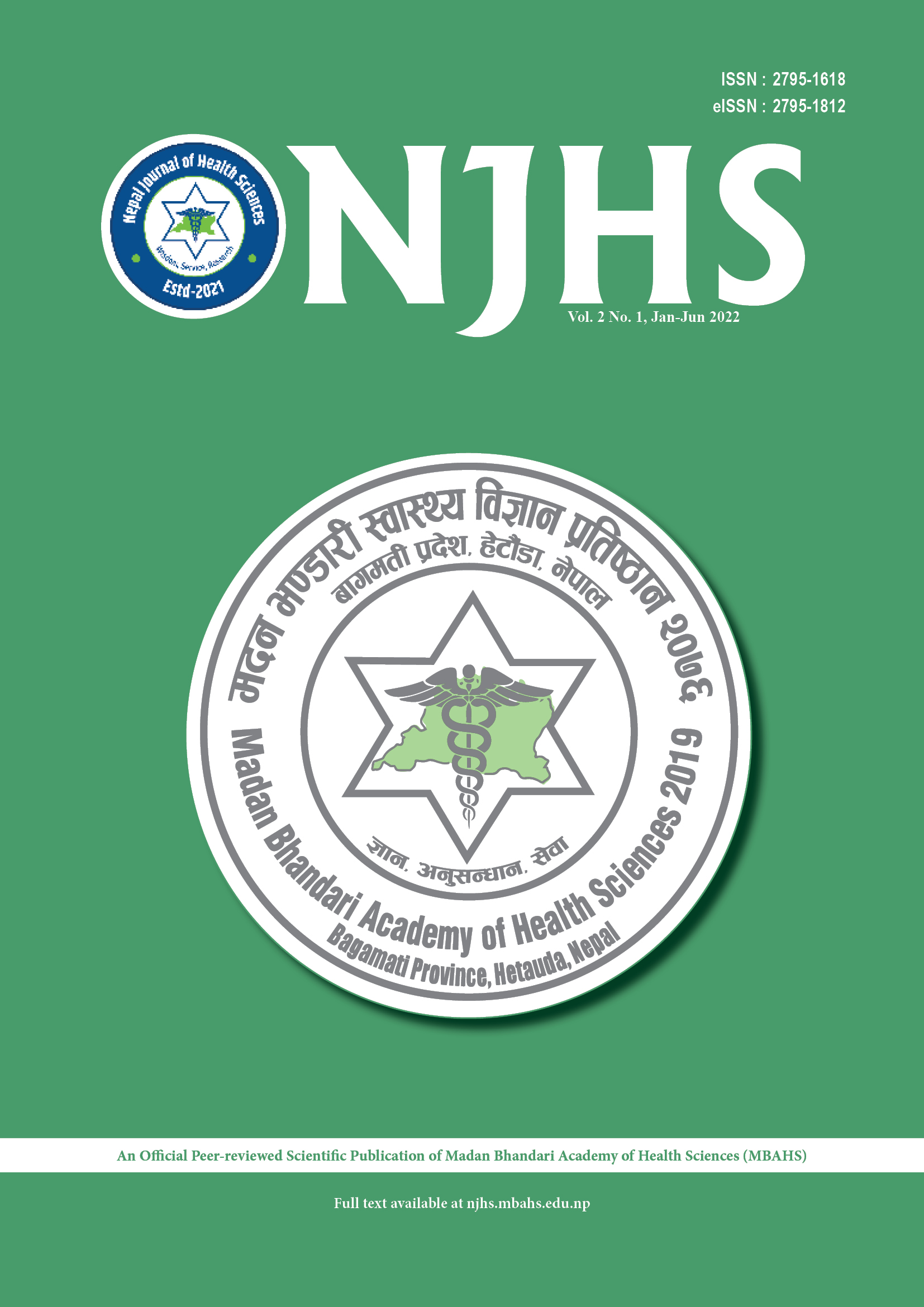Evaluation of Interocclusal Rest Space among the Patients Attending Dental College and Hospital
DOI:
https://doi.org/10.3126/njhs.v2i1.47159Keywords:
Freeway space, interocclusal rest space, rest vertical dimension, vertical dimension of occlusionAbstract
Introduction: Interocclusal Rest Space (IRS) is one of the significant factors that determine an individual’s aesthetics, their ability to perform oral functions, and oral reconstructive procedures.
Objective: Evaluation of interocclusal rest space in different age groups, sex, and Angel’s class of malocclusion.
Methods: A descriptive cross-sectional study was conducted among the patients attending People’s Dental College and Hospital, Kathmandu. The interocclusal rest space in 321 subjects was determined after measuring the vertical dimension of rest and occlusion with a digital caliper.
Results: The IRS among the participants ranged from 2.11±1.06 -2.58±0.79mm. The age group of 55 years and above had the highest mean IRS (2.58 mm) followed by 35-44 years with a mean IRS (2.43 mm). There was no statistically significant difference in IRS among the different age groups (P-value 0.29). The mean IRS of the male (2.43mm) was statistically significantly higher than the female (2.02 mm) group (P-value 0.001). The IRS among participants with Angle’s class I, II, and III malocclusions had no statistically significant difference (P-value 0.08) among the three groups.
Conclusions: The mean value of IRS in Nepalese subjects can be considered within the average value of 2-3 mm. The mean values of IRS among the participants were 2.21mm. The average IRS values in males should be considered 0.4 mm more than in females.





